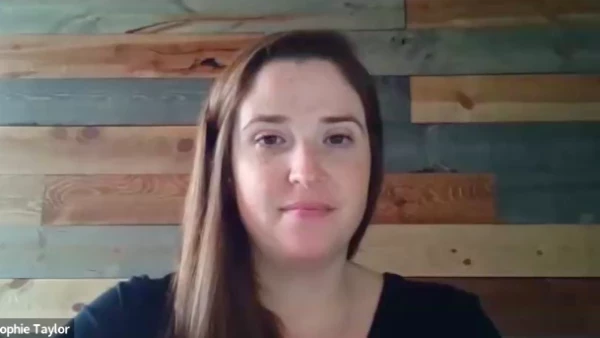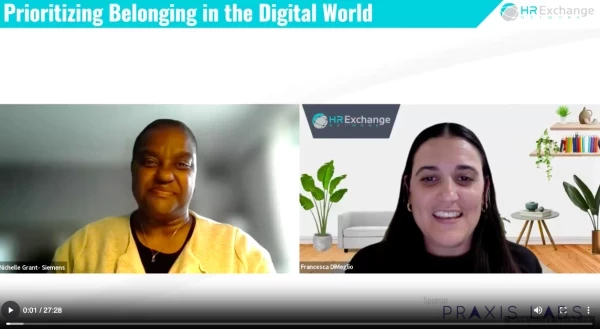5 Ways to Include Disabled Employees
Add bookmark
Human Resources professionals are committed to helping their team members feel included and gain a sense of belonging, but disabled employees are still often excluded. About 1 billion, or one in seven people, are disabled, according to the World Health Organization (WHO).
In 2022, about 21% of people with a disability in the United States were employed, according to the U.S. Bureau of Labor Statistics (BLS). While that number is higher by two percentage points than the year before, the figure still represents underemployment at a time of labor shortage for many industries.
In fact, only 22% of autistic adults have some kind of employment, according to the National Autistic Society. The first step for employers looking to broaden their definition of diversity and consider people in this underemployed group can connect with organizations that can help identify talent in this category. They may have to change their approach to hiring because traditional means may not reveal talents and strengths of the neurodiverse.
Whether disabled employees have a visible or invisible disability, their success at work depends on the employer's approach to inclusion. Here are some ways to provide that much-needed sense of belonging:
Get Educated
HR professionals must learn about the disabilities that the people they are hiring may have. Granted, those with invisible disabilities might not even reveal their condition. However, for instance, learning about neurodiversity and the realities of adults with conditions like autism can help people understand how these employees can fit into the culture.
Reading blogs and following the social media posts of advocates is one way to start. For example, LinkedIn Top Voice Ryan Honick is a disability advocate, who regularly shares posts that inform people about disabled employees and their personal and professional lives. He gives them a voice and creates a dialogue between disabled community members and others, including their potential employers or managers and those in HR.
What many people do not realize is that adults with autism think differently and may have strengths that compliment those of other employees. Employees with physical disabilities often have no limitations on their ability to do knowledge work. Yet, they face discrimination or inaccessible workplaces. Aside from doing research on these conditions, HR leaders can create a dialogue with activists, leaders of the organizations that are connecting disabled job applicants with potential employers, and the applicants and workers themselves.
Embrace Remote Work
"An embrace of remote work spurred by the pandemic helped the employment rate for disabled people reach an all-time high last year. The percentage of disabled people who were employed rose to 21.3% in 2022, according to data released by the Bureau of Labor Statistics," reported by Bloomberg in early 2023.
One of the biggest obstacles facing many disabled people who are seeking employment, is offices and other places of employment that are not accessible. The ability to work from home, which is already accessible to the disabled employee, is a solution to this problem if it is possible for the role. In fact, many diversity, equity, and inclusion leaders have pointed out the fact that pushback on remote work can be a form of discrimination for disabled people and women, who are often caregivers and need the flexibility.
WATCH: Diversity, Equity, Inclusion, and Belonging (DEIB) Event Conversations
Make the Workplace Accessible
If the organization has the means and the work cannot be done from home, then the alternative is to create an accessible workplace. Actually, the Americans with Disabilities Act (ADA) puts much of this into law. Some examples include ensuring there are elevators and ramps for those with mobility issues, creating quiet spaces and having headphones available for neurodiverse employees who must remove distractions, having the proper technology for deaf employees to communicate with colleagues and clients, etc.
Microsoft has been a leader in creating an accessible workplace for its employees, as well as creating technology to help all disabled people have more fulfilling personal and professional lives.
Empower Disabled Employees
Recently, one of their champions, Microsoft Corporate Vice President of Human Resources Chuck Edward, revealed his own disability; he has multiple sclerosis (MS), a disease of the central nervous system. Having someone in leadership represent the needs of disabled employees on its own is a tool of inclusion. When those leaders speak up, serve as advocates, share their own stories, and help bring together diverse teams, everyone benefits.
Talk to Them
Communication is the baseline for helping people feel included. Talking to colleagues, including them in discussions, and listening to them is the best way for HR and fellow employees to show anyone that they value them. Getting feedback from disabled employees - and responding to it transparently - is a great first step. With remote workers, leaders must be even more intentional in their communication.
READ: How to Make the Workplace Friendly for the Neurodiverse
However, this step also requires understanding the other person's needs. For example, some neurodiverse employees might not be great communicators and might get overwhelmed by too much social interaction, but HR and fellow employees should still involve them when appropriate and in ways that would appeal to them. Asking questions about the unique needs of the employee helps employers personalize the experience and get the best out of each person.
Photo by Kampus Production for Pexels





















